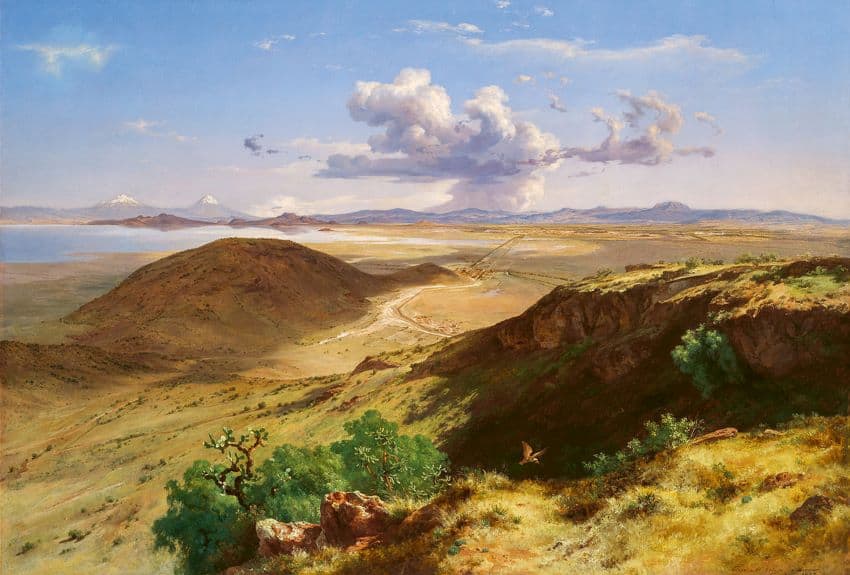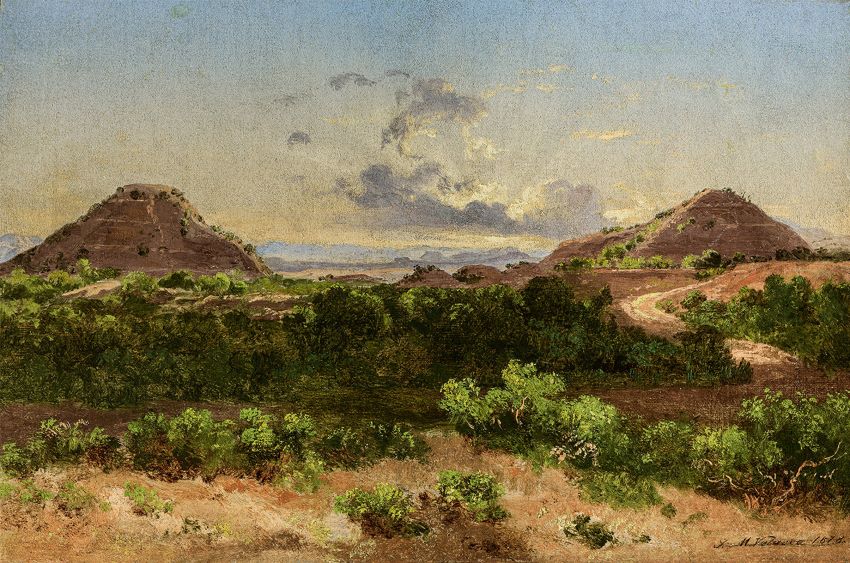A historical exhibition honoring one of the most important artists in Mexico, “José María Velasco: A View of Mexico” is now exhibited at the National Galerie in London until August 17. The first time the gallery has devoted a solo exhibition to a Latin American artist, the exhibition marks 200 years of diplomatic relations between Mexico and the United Kingdom.
The National Gallery, located on the Trafalgar square in London, is one of the most visited museums in the world. It houses more than 2,300 paintings from Western Europe, from the Middle Ages at the beginning of the 20th century. Unlike many European museums, the National Gallery was not based on a royal collection; Instead, he started in 1824 when the British government acquired 38 paintings from a private banker. From the start, his mission was clear: these paintings belong to the public. Entrance has always been free.
The imagery created by José María Velasco is deeply woven in the national identity of Mexico. Its landscapes are well known and it is a familiar name across the country. However, Velasco’s art is rarely seen in Europe. There is not a single Velasco painting in a British public collection, and there has not been a major international exhibition dedicated to the painter since 1976. This London showcase offers a rare and long -awaited opportunity for the world public to live its work.
A painter who defined a nation
Born in 1840, José María Velasco studied at the San Carlos Academy in Mexico under the Italian painter Eugenio Landesio. Although trained in European tradition, Velasco quickly developed its distinct style and has become a most famous landscape artist in Mexico. Velasco was a true polymathe: a man of deep and great curiosity, he continued studies in fields that have enriched his art, including anatomy, geology, botany, paleontology and Meso-American history. Velasco approached art from a scientific point of view, using it not only to capture beauty but also to explore and understand the world around it. His paintings reflect a deep reverence for nature and an increasing consciousness of its fragility at an era of rapid industrialization.
When José María Velasco began his career, Mexican painting was widely focused on the human figure. Nature, if included, was often just a backdrop. Velasco changed this by devoting most of his work to the landscapes, placing the natural world at the center of his art. His paintings are visually amazing and technically sophisticated with a distinctive visual architecture: layers in layers, precise compositions and colored harmony and proportion that encourage viewers to stop and reflect on the richness of the natural world.
Combining the eye of a scientist and the soul of an artist, Velasco created nearly 300 works, including oil paintings, watercolors, lithographs and miniatures. They have become precious educational tools and brought him national and international recognition. In 1881, he was appointed president of the Mexican Society of Natural History, a rare honor for a painter and a testimony of his position both in art and scientific communities.

Among his most emblematic works are the paintings of the “Mexico Valley”, panoramic views of the Mexico Valley which he painted in several versions over the years. These radical landscapes offer an overview of the area around Mexico City before being transformed by urban growth. A version has been offered to Pope Leo XIII and now belongs to the Vatican museums.
Velasco at the National Gallery
The exhibition includes 30 works of public and private collections, 17 of which come from the Museo Nacional de Arte in Mexico City. Three paintings are loaned by the Prague National Museum. They formerly belonged to Franišek Kaška, personal pharmacist of the emperor Maximilian I. During the short -term reign of Maximilian in MexicoKaška ordered work directly from Velasco. After the execution of the emperor in 1867, Kaška continued to play a diplomatic role, helping to secretly reconstruct the links between Austria and Mexico.
Among the highlights of the exhibition, there is “Popocatépetl and Iztaccíhuatl Vu du Lac Chalco”, a painting of 1885 commanded by Franišek Kaška in homage to the missing beauty of the lake before its exhaustion. Velasco places the spectator at the water, attracting the eye upwards towards the two snowy volcanoes.
The exhibition covers more than 50 years of the artist’s career and is organized in six thematic sections, each reflecting the wide range of interests from Velasco and how they shaped his art. The “Landscape and Industry” section examines how the artist documented the rise of factories and railways in the late 1800s with paintings like “The Molino Del Rey Molino Valley” and “The Textile Mill by Carolina, Puebla”. The “Flora” section focuses on her love for plant life as we see in “a rustic bridge in San ángel” and “Cardón, State of Oaxaca”. At the heart of the exhibition is “the Mexico Valley of the Santa Isabel hill”, often considered as Velasco’s masterpiece. The other sections include “ruins and archeology”, “geological time” and “late works”, including its last known painting, “Study”.

Velasco’s work has helped define the visual identity of the nation. In 1943, the Mexican government declared its working corps in the national historic monument in recognition of its sustainable cultural value. This exhibition offers a rare opportunity to the foreign public to explore the richness of its work, from volcanic peaks to ancient ruins, giant cacti and animated industrial scenes. For visitors to the National Gallery, it’s a chance to see Mexico through Velasco’s eyes in lively and unforgettable details.
Sandra Gancz Kahan is a Mexican writer and translator based in San Miguel de Allende who specializes in mental health and humanitarian aid. She believes in the power of language to promote compassion and understanding through cultures. It can be reached (Protected by e-mail)




